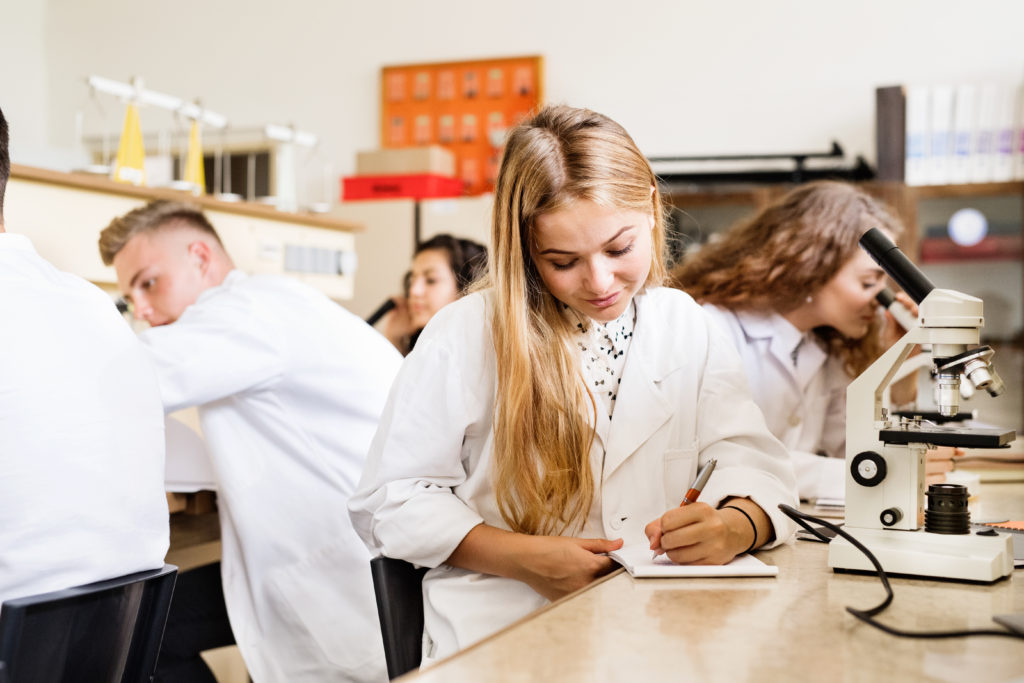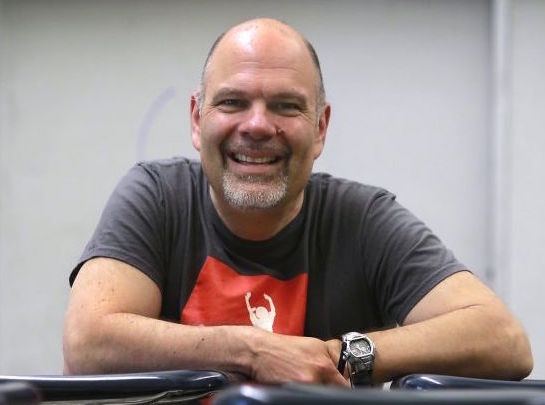Glenn Wolkenfeld is a high school teacher and the man behind the websites learn-biology.com and sciencemusicvideos.com. We spoke to him about all things music and science education.
Hello, Glenn. Thank you for speaking to us. Could you tell us a little about yourself?
I’m a high school biology teacher in Berkeley, California, where I teach at Berkeley High School. I’ve been a teacher since 1987, but not continuously. I’ve left teaching twice to work as an instructional designer and later as a school administrator. However, I always come back to what’s been my enduring professional love: teaching biology.
Teaching biology is a very hard thing to do: the concepts are very complex, and the amount of content in a typical high school course is enormous. So, I’m always looking for ways to make the material more engaging and easier to learn. Writing songs about biology has been a big part of that. I’ve also been interested in how computers can be used to get students to interact more with biology. I’ve been experimenting with computer-assisted-instruction since my first year in the classroom.
All of this work has culminated in what’s become my biggest project: creating an interactive, online College/AP Biology curriculum on my website, learn-biology.com. My goal with that project is to help students experiencing the confusion and frustration often associated with a first-year biology course, and, through our interactive tutorials, help students (and their) instructors, be successful in biology.
That project started slowly. First, I teamed up with my programming partner Dan Kirshner, who created an interactive platform called ‘qwizcards’ for me to develop interactive tutorials for my students (people can learn more about that at Dan’s website, qwizcards.com). After a few years, other teachers started buying licenses to use these tutorials with their own students. Last spring, we opened up our website for any high school teacher or college instructor to use for free with their students during the COVID-19 pandemic that forced schools around the world to shut down. By the end of May, we had about 1200 teachers using the site with over 13,000 students.
Your website https://learn-biology.com has a great blend of traditional learning (e.g. tutorials and quizzes) and songs. How do you think these songs complement learning?
My first teaching job was at a school for kids-at-risk in a rural town in Oregon. The school served students who had been kicked out of or were in danger of dropping out of the local high school. Classes were small, but the disciplinary issues were huge. Despite these challenges, the school had a great culture around music: we started each day with a song circle where I or other singing-guitarist teachers would lead songs by the Beatles, or Dylan, or Credence Clearwater Revival, and the students would always happily sing along. Within a week or two of starting this job, I began writing songs about cells, food chains, and chemical bonding. Along with more traditional lessons, I’d occasionally bring my guitar into the classroom and sing these songs with my students to help them learn about Biology or Chemistry. As difficult as the previous day’s lesson might have been, the moments when I was singing with my students were always moments when I had the students’ full attention.
I think that this element — attention and engagement — is key to why music works to enhance learning. Anything that teachers can do in the classroom to get students to engage with what they’re teaching is going to move the learning forward. As a science teacher, labs and hands-on science are a great way to do that. But anything that’s “minds-on” is going to help students do the cognitive work that’ll help them encode biology content into long-term memory.
The same philosophy of student engagement is what drives my interactive tutorials. They take biology content and require students to engage with it by answering multiple choice and fill-in-the blank questions, labelling diagrams, and working with flashcards. It takes what would be a passive experience — reading about biology in a textbook — and makes it active and challenging in a way that leads to learning. Students, of course, can do this themselves through techniques like Cornell notes. But our biology curriculum curates the experience to make learning efficient and fun.
Your music videos are brilliant. Do you enjoy making them?
First of all, Thanks! Writing music and making videos are incredibly fun processes. I love the challenge of writing good lyrics, and then working with my song writing partner, Max Cowan, to create music that’s as good as the lyrics.
How do you come up with your songs?
The first songs, written during my first year of teaching, were pure inspiration. I’d be working on a lesson, and lyrics and tunes would just come to me. Two of those earliest songs, The Cell Song and Food Chains, are still part of my repertoire (though Food Chains is a bit unique, because it uses a melody from another song).
As I kept on teaching, I continued to bring my guitar to school. It was always a special treat for me and for my students. In 2008, I took a short leave from teaching, which gave me an opportunity to record some of my songs and to write a few more. YouTube had started just a few years before that, and I uploaded two songs, with some minimal video for visuals, and they turned out to be very popular. That was an inducement for me to write more. I wanted to expand into other genres, particularly hip-hop, and to do that, I teamed up with Max Cowan, an incredible musician and music teacher. With Max’s help, I was able to really improve the quality of the music.
The process behind my most recent songs has been to get a vague musical idea in my head, or to write to a beat. Then I’ll bring the lyrics to Max, and we’ll work up a hook. They he’ll lay down an original beat. Once that’s set, he’ll set up the microphones, and coach me through singing or rapping. After another hour or two of work, he’ll have a finished product. He’ll send that to me, and I’ll use that to create the music video. I do that by making a video of myself lip-synching the lyrics over a green screen. Then the most time-consuming part is creating the visuals, which can often involve some pretty tricky animation (see my videos about the Electron Transport Chain or Protein Synthesis).
You do many different musical styles in your music videos. Do you have a favourite?
Not really. I think that my own musical DNA is rooted in the music I listened to as a teenager, which was the Beatles, Dylan, Neil Young, Elton John, etc. But I’ve also always liked rap: my tastes there have been shaped mostly by the 1990s rap that my producer Max Cowan introduced me to as I was working up songs like “DNA, Fantastic!” and “Mitosis.” I also try to follow artists in other genres, though my discovery of “new” music can lag 20 years behind the times. For example, last year I discovered Alanis Morissette’s ‘Jagged Little Pill’, which was huge in the 1990s, and I spent a lot of 2019 binge-listening to it. When our school has its Homecoming/Rally Day celebration, I’ll bring my guitar into class, and sing “Party in the USA” with my students, which is always a huge hit!


